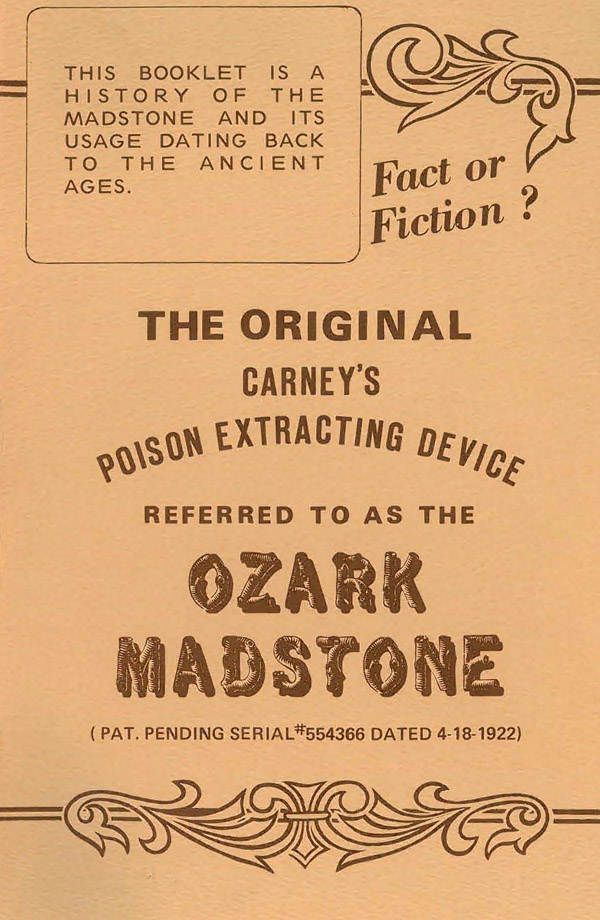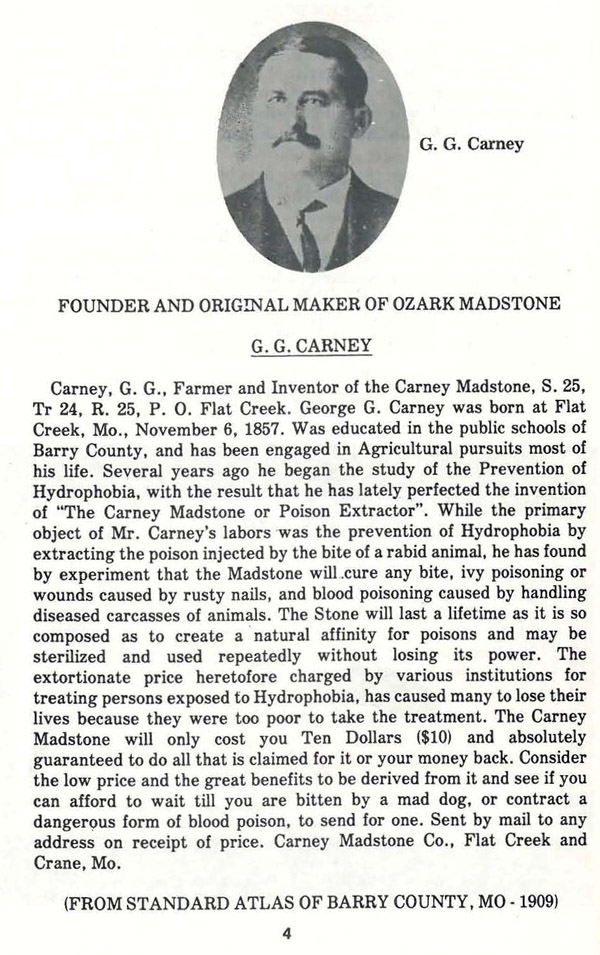From Ozark Superstition by Vance Randolph
The madstone treatment for rabies was once popular in many parts of the United States and is still well known in the Ozarks. The madstones I have seen are porous and resemble some sort of volcanic ash, but the natives all claim that they were taken from the entrails of deer. These stones are rare now, and they are handed down from father to son, never sold. No charge is made for using the stone although the patient may make the owner a present if he likes. I have never seen the madstone in actual use, but they tell me that if the dog was really mad the stone sticks fast to the wound and draws the poison out. After a while the stone falls off, and is placed in a vessel of warm milk, which immediately turns green. The stone is then applied to the wound again, and so on until it no longer imparts a green color to the fresh milk. Virtually every old-time hillman believes that if the madstone is applied soon enough and sticks properly, the patient will never suffer from rabies, even if the dog was mad.
J. J. Hibler, veteran real estate dealer in Springfield, Missouri, kept a madstone in his office for many years; it was famous in the nineties, and people came from all over southwest Missouri to use it. Homer Davis, of Monett, Missouri, used to have a madstone, shaped like a halfmoon. The old·timers say that it was always dipped in hot milk before applying it to a wound. It was a porous stone, said to have been taken from the stomach of an albino deer more than seventy-five years ago.
Many old people allege that the madstone in a deer is always found in the stomach, while others place it in the intestines or the bladder, or in the udder of a doe, or even between the windpipe and the lights. Uncle Lum Booth, of Taney, County, Missouri, who had given the matter considerable thought, said that so long as the deer was white it made ·no difference in what part of the body the stone appeared.
Even in Kansas City. Missouri, madstones were still in use as late as 1931, according to the Kansas City Journal-Post, August 4, 1935. A stone belonging to Mr. Noel E. Jackson, aged pioneer, is said to have been brought from Scotland in the early days by a man named Bates. It looks like whitish limestone, about an inch and a half long, with a sort of honeycomb structure; it has the appearance of a fossil, though Mr. Jackson thinks it came from the stomach of a deer. He says he has seen this stone used hundreds of times and has never known it to fail. He has never charged a cent for the use of it. In 1931, Mr. S.T. Dailey of Strasburg, Missouri, was bitten by a rabid mule. The stone adhered to Dailey's wound for nine hours. Jackson says the stone is often applied to the same patient several times. In the case of a little girl from Independence, Missouri, it stuck for fifty -five minutes and then fell off. Jackson cleaned the thing in sweet milk, dried it carefully, and two days later he applied it again. This second time the stone adhered for thirty-five minutes. Several days later it was tried again, but failed to stick at all, which the neighbors regarded as evidence that the child was safe from rabies. |



